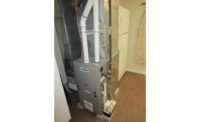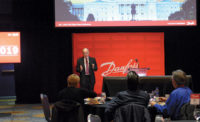Is the noncondensing furnace and water heater market nearing extinction? The end may not be near, but it is also less remote in the wake of a recent Department of Energy (DOE) decision to revisit an interpretive rule issued in the last days of the Trump administration.
Feature or Carve-Out?
A proposed 2016 DOE furnace rule would have established a 92% AFUE minimum efficiency rating that in turn would have cut noncondensing technology out of the market.
However, in mid-January of this year, the Trump administration found a workaround. It published a final interpretive rule that judged the noncondensing technology itself to be a performance-related “feature.” Under the Energy Policy and Conservation Act, such a feature cannot be eliminated by any subsequent energy conservation standard. Thus, noncondensing equipment received protection from such efficiency requirements.
Now, the DOE “deems it prudent to revisit” that interpretation. Alex Ayers, HARDI director for government affairs, explained the DOE perspective in correspondence with HARDI members.
“DOE has determined that the basis of a feature is determined by the utility derived by the consumer. Because the venting used by furnaces and water heaters does not change the ability to receive hot air or water, the consumer receives no utility from maintaining noncondensing technology on the market.”
If a consumer cannot tell the difference in the end result and the “feature” in question involves what has become a comparatively less efficient design for delivering that product, the DOE seems to reason, then that aspect hardly qualifies as a benefit for the user.
The DOE is accepting comments, data, and information regarding this proposed interpretive rule through Sept. 27. At that point, the department plans to “evaluate whether amended energy conservation standards would result in significant savings of energy, be technologically feasible, and be economically justified, consistent with its interpretation.”
Efficiency gains Vs. Replacement pains
Of course, condensing versus noncondensing efficiencies are one thing for policy discussions or decisions related to new construction. Replacements in existing structures may be another matter.
When this issue last arose, a number of interest groups and companies dubbed themselves the Gas Petitioners. The comments they submitted to DOE argued that in some cases, a building cannot accommodate a condensing replacement unit due to either its design or the venting requirements for condensing equipment. In that scenario, they reasoned, the retrofit-friendly nature of a new noncondensing unit becomes quite a meaningful feature after all.
The potential market consequences of a DOE reversal on the matter explains why an ad hoc consortium called the Gas Petitioners would weigh in at all, and with strong sentiments. A manufacturing landscape without noncondensing residential furnaces or commercial water heaters would advance the broader goal of decarbonization.
One key plank in decarbonization strategy is electrification, which aims to slash reliance on equipment that depends on fossil fuels at the point of use. While fossil fuels may in turn still be used to meet some of the resulting demand for electricity at a plant, decarbonization strategy would simultaneously aim to boost the share of renewable sources of electricity and to upgrade the national grid to work more efficiently.
The Biden administration has embraced decarbonization and electrification initiatives elsewhere. In that context, the DOE’s eventual position seems even more likely to favor increased efficiencies with no special protections for designs that cannot clear that bar.
Should that happen, availability of new noncondensing units would not evaporate overnight. However, in the absence of some type of grandfather clause or flexibility to account for a building’s limitations, contractors could expect owners of multifamily dwellings currently relying on gas furnaces to have increasingly acute interest in maintaining and preserving their existing units.








